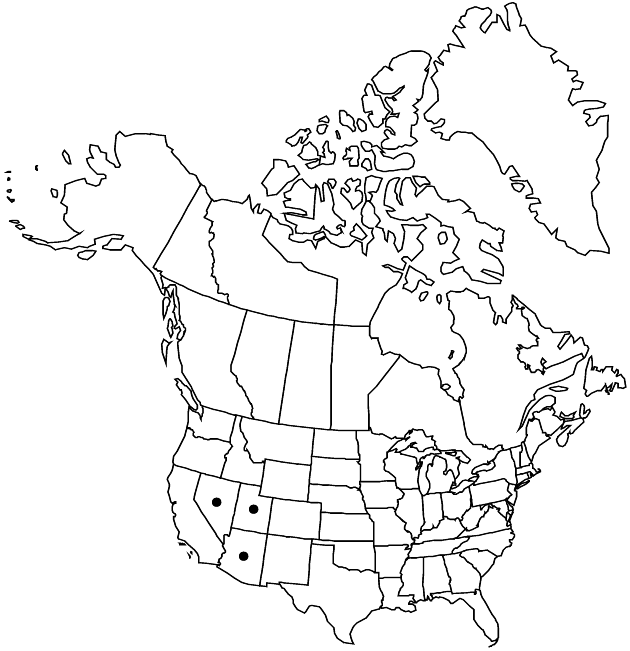Difference between revisions of "Perityle tenella"
Contr. Gray Herb. 56: 39. 1918.
FNA>Volume Importer |
FNA>Volume Importer |
(No difference)
| |
Revision as of 18:50, 24 September 2019
Perennials or subshrubs, (5–)15–30(–35) cm (stems erect to pendulous often densely leafy); usually densely short-hairy. Leaves: petioles 2–8 mm; blades usually broadly deltate-ovate, sometimes subovate or subcordate, 5–18(–25) × 4–18(–20) mm, (bases truncate) margins usually ± serrate, rarely laciniate. Heads borne singly or (2–10) in corymbiform arrays, 6–7 × 4–6 mm. Peduncles 4–25 mm. Involucres campanulate. Phyllaries 13–20, linear to narrowly or broadly lanceolate, 4–5(–6) × 0.8–1.3 mm. Ray florets 0. Disc florets 23–35(–48); corollas yellow, tubes (1–)1.2–1.6 mm, throats tubular to narrowly funnelform, 1.2–1.6(–2.2) mm, lobes 0.3–0.7 mm. Cypselae narrowly oblanceolate, 2.5–3.3 mm, margins obviously calloused, minutely hairy; pappi 0 or of 1(–3) moderately stout bristles 2–2.8(–4.1) mm plus callous crowns. 2n = 32.
Phenology: Flowering spring–fall.
Habitat: Rocky slopes or crevices in limestone or sandstone rock faces
Elevation: 600–2700 m
Distribution

Ariz., Nev., Utah.
Discussion
Of conservation concern.
Similarities of Perityle tenella to P. congesta are discussed under the latter. Perityle tenella occurs in northwestern Arizona, southeastern Nevada, and southwestern Utah.
Selected References
None.